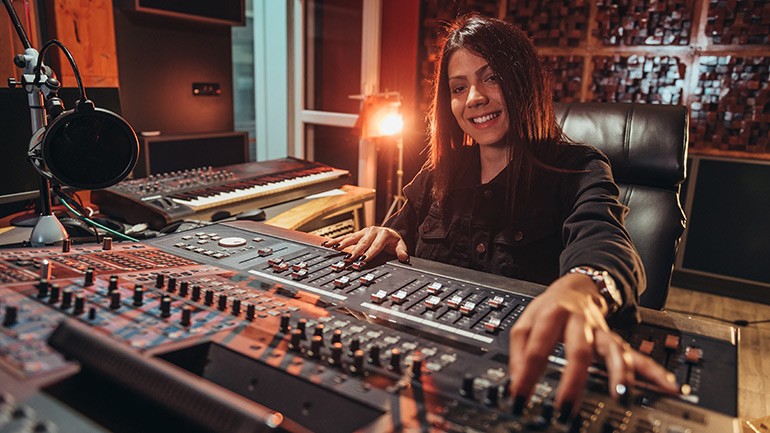Understanding the Art of Mastering
The crucial last step in the record-making process, mastering involves the use of specific tools and techniques designed to give a mix its professional sheen when delivering to music platforms, radio and the like—and why it’s often a job best left to those in the know

We all strive to achieve a good-sounding finished product on our own, however there are times when a competent third party could take the work to a much better place. A good mastering provider is often that logical next step—someone with the ears and tools to imbue your track with a professional sheen when presenting to radio, streaming platforms, or other key situations. While it’s entirely possible to make a competent master from home, enlisting the services of an expert may be well worth the investment.
Mastering in a nutshell. People sometimes use the term “mixed master” to describe any finished recording, when in reality mixing and mastering are two distinct tasks, each with a completely different set of rules. Basically, the objective of mastering is to take a two-track mix and make it sound as good as possible by addressing a number of key areas, including tone, volume, blend as well as dynamics.
For instance, while we might use equalization randomly or based on our own personal taste, a mastering professional might focus instead on the overall frequency balance. Similarly, when presented with a collection of tracks for an album or EP, the mastering engineer will ensure that the output of each selection is uniform to avoid radical shifts in volume from song to song. As we recently noted, the evolution of digital music has made it all the more important to observe proper leveling techniques, as a song that is either too loud or too soft for a music platform may be automatically adjusted beforehand, leading to possible audio issues once streamed.
Prepping your mix for mastering. Whether using a third party or attempting to master on your own (more on this in a bit), you’ll want to follow a few basic mixing rules in order to achieve the best results, such as ensuring lead vocals and other key passages are prominent enough before sending off to the mastering lab. You should also tread carefully around sound processors, as too much added seasoning could create problems later on. For instance, mastering typically involves the use of compressors or limiters that help bind together the individual elements, while also giving the whole work some extra heft. However, the process can also accentuate the sound of delays or reverbs that have been “printed” in the mix, in some instances adding more “tail” than was originally intended. For that matter you’ll want to avoid adding your own compression altogether, otherwise your post-mastered track could get squashed into oblivion.
Can I master at home? Many digital audio workstations have included some form of mastering capability for a while now, and over the years the technology has only gotten better (and cheaper). So why job out when you could master in-house? For one thing, there’s more to it than a simple piece of software—you’ll also need an acoustically treated room, a good set of ears, and, most importantly, an understanding of how to prepare the work for a wide range of formats and listening environments, from streaming services to broadcast radio, club-sized speakers to smartphones and more.
Of the folks I know who operate a professional recording facility, not one attempts to master themselves—which should tell you a lot right there. That said, if you’re just putting together a demo for a music venue or a group of friends, there’s certainly no harm in trying out any of the basic mastering solutions available as plugins, or perhaps included in your DAW setup. At the very least, going through the paces will help you better understand the division of labor between mixing and mastering, whether you choose to do it yourself or not.






Community
Connect with BMI & Professional Songwriters